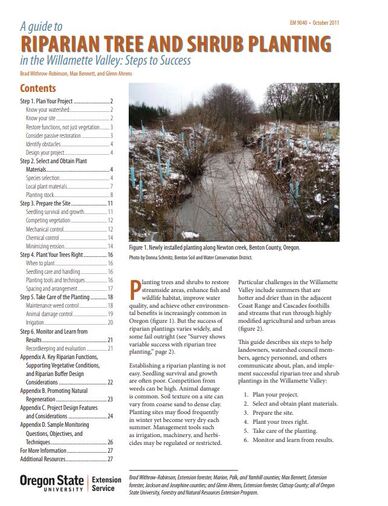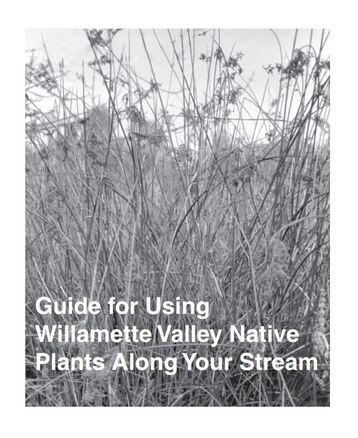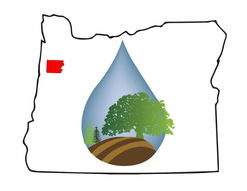The Conservation Reserve Enhancement Program (CREP) is a voluntary program that pays you to restore your streamside agricultural land.
The purpose of this program is to establish riparian buffers on agricultural land and to enhance water quality and wildlife habitat.
PLEASE NOTE:
Enrollment in CREP is not possible at this time due to the current status of the Farm Bill.
Please direct any questions to Julianna Eckley, Marion/Polk County Farm Service AgencyCounty Executive Director - [email protected], (503) 399-5741 ext 2.
The purpose of this program is to establish riparian buffers on agricultural land and to enhance water quality and wildlife habitat.
PLEASE NOTE:
Enrollment in CREP is not possible at this time due to the current status of the Farm Bill.
Please direct any questions to Julianna Eckley, Marion/Polk County Farm Service AgencyCounty Executive Director - [email protected], (503) 399-5741 ext 2.
Healthy Riparian Buffers:
- Create shade to keep streams cool for native fish
- Protect water quality by filtering potential chemical contaminants
- Provide habitat for wildlife species
- Stabilize and protect soil from erosion
- Reduce downstream flooding
CREP is for landowners who:
- have agricultural land near a seasonal or perennial stream, a pond connected to a stream system, or a wetland without an adequate buffer
- have owned the land for at least one year
- want to establish native trees and shrubs to attract wildlife and pollinators
- have weed dominated stream banks and/or erosion concerns
CREP Provides:
- Yearly rental payment
- sign-up incentive program
- cost-share to install best management practices
Lands classified as forest or woodland are NOT eligible.
For additional information or to determine eligibility please contact your local FSA office or call Marc Bell at the Polk SWCD at (503) 623-9680.
For additional information or to determine eligibility please contact your local FSA office or call Marc Bell at the Polk SWCD at (503) 623-9680.
|
Planting trees and shrubs to restore streamside areas, enhance fish and wildlife habitat, improve water quality, and achieve other environmental benefits is increasingly common in Oregon. But the success of riparian plantings varies widely, and some fail outright. Establishing a riparian planting is not easy. This guide describes six steps to help landowners, watershed council members, agency personnel, and others communicate about, plan, and implement successful riparian tree and shrub plantings in the Willamette Valley:
1. Plan your project. 2. Select and obtain plant materials. 3. Prepare the site. 4. Plant your trees right. 5. Take care of the planting. 6. Monitor and learn from results. |
|
This introductory guide is intended for people who want basic information on natural landscaping, streambank stabilization, and landscaping for wildlife habitat using native plants. This brochure provides a step-by-step, easy-to-use guide to planting Willamette Valley natives along your streambank. Species which are not native, are not found frequently, or are not easily propagated are not covered in this guide. For more detailed information on native plant propagation and identification, please refer to the references at the end of the brochure.
Published by Linn SWCD |



